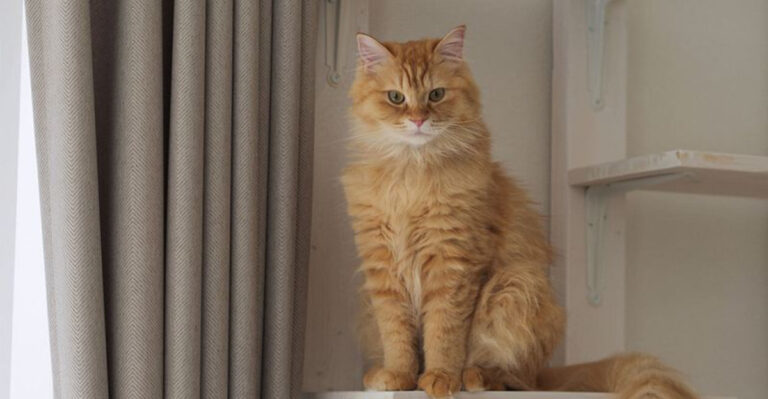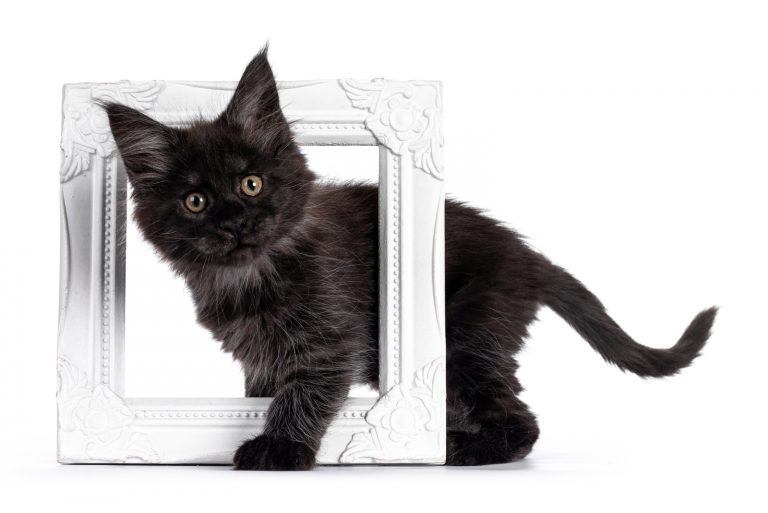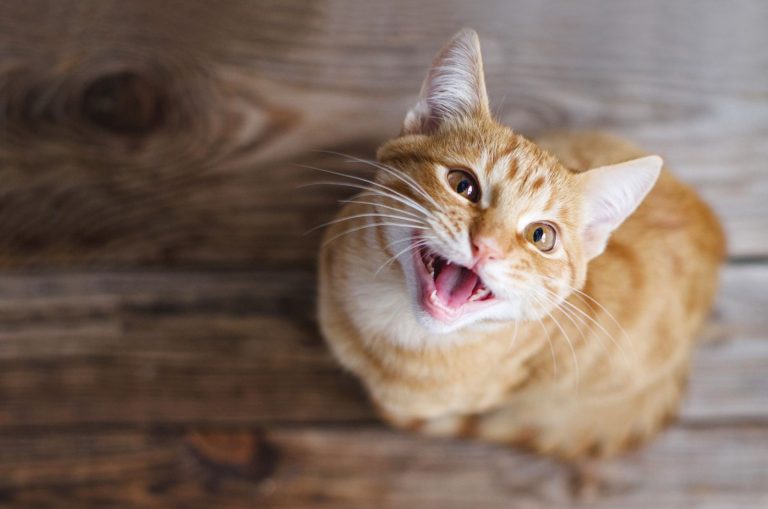New Kitten Checklist – 2023 Guide On What To Do & What To Buy

This post contains affiliate links, and I will be compensated if you make a purchase after clicking on my links, at no extra cost to you.
Adopting a new kitty is a marvelous thing; you’ll definitely be a lot happier with them than without them. Kittens are great, but they do require a certain amount of effort, care, time, and money.
You might feel a little overwhelmed by all the things you have to do or buy before you welcome your furry friend into your home.
You will have to invest a certain amount of effort, time, and money, but what’s that compared to all the love that will fill your heart? (Awww!)
When bringing a new kitten home, there are a few things you need to consider, and then a few more that need to be done! But don’t worry,
I’ve summed up the new kitten checklist to make it simple for you.
What your kitten needs is one scroll away, so read on and take notes.
New Kitten Checklist: Buying The Essentials
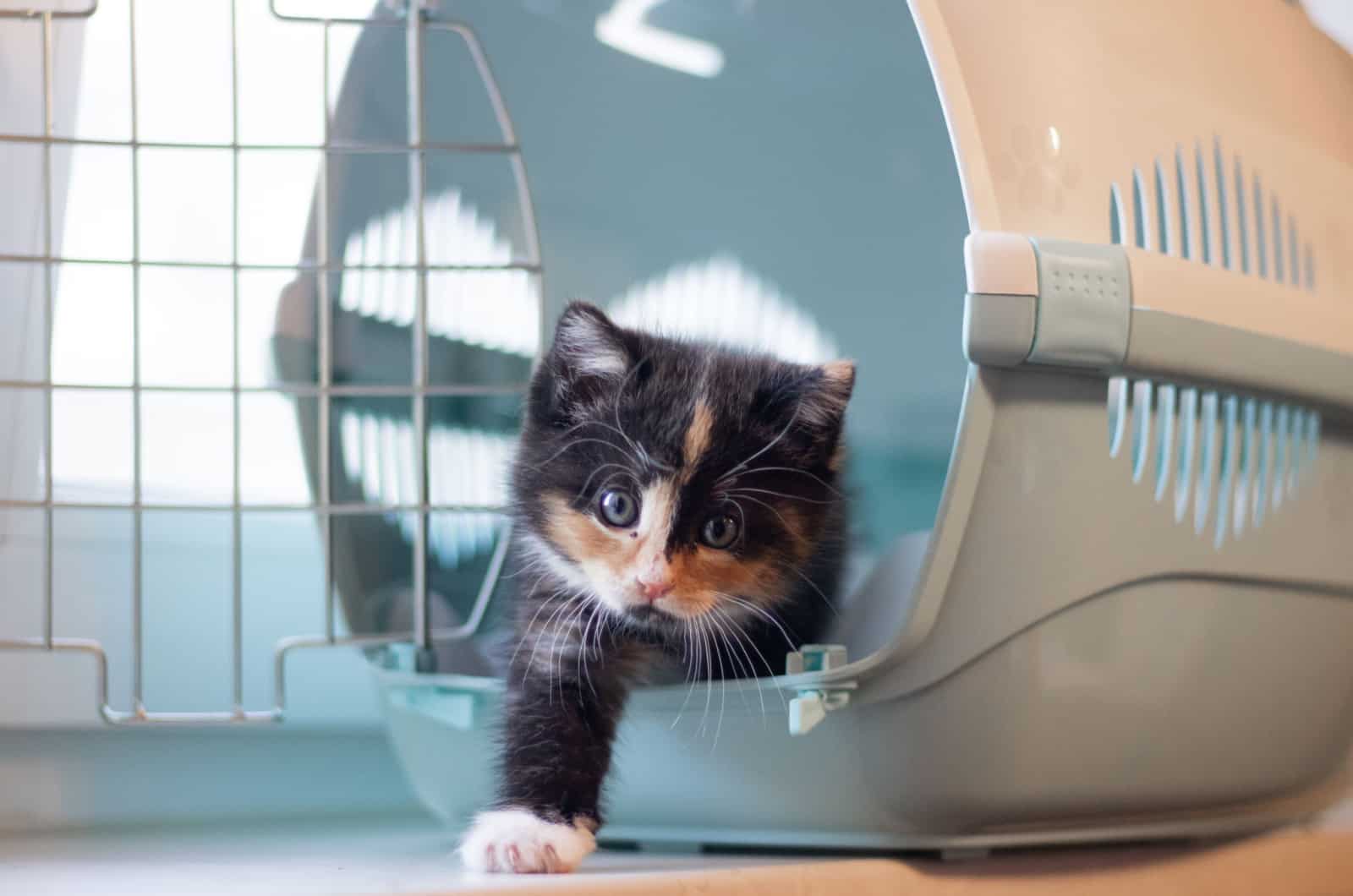
[table id=242 /]
Cat Carrier
A cat carrier, also known as a travel carrier, is something you should always have on hand because there are several occasions when you might need it during your cat’s life.
It is also necessary for transporting your new kitten from the breeder or adoption center to its new furever home.
Travel carriers are used to bring your kitten to the veterinary clinic, possible play dates, and, if required, to the professional groomer.
You’ll want a crate that’s sturdy and gives your cat enough room to turn around but not so much space that they’re tempted to make it dirty. Cats are less likely to dirty the place in which they are sitting.
There are two basic distinctions when it comes to pet carriers: the soft-sided and the hard-sided. I like both of these, so it’s really a matter of personal choice. You have many options to choose from, but I would recommend the following:
• MidWest Homes for Pets Pet Carrier: Hard-Sided
• Refrze Pet Carrier Airline Approved: Soft-Sided
Kitten Food
A kitten’s dietary needs are very different to those of adult cats. This includes an increase in protein, vitamins, lipids, and minerals.
Pet food is a fairly contentious subject among owners, as many people have strong feelings about what is best for their cat. Always remember that food labels are there for a reason, so they should be read!
Kitten food is, logically, for kittens, so at the beginning, you’ll need to buy it. Always opt for meat-based and grain-free foods since cats are obligate carnivores which means they need proteins from meat.
The best thing to do is establish a diet plan with your vet and talk to them about anything that you need.
Check out: How Long Can Kittens Go Without Food? Everything You Need To Know!
Cat Bed
Your kitten still has a lot of growing to do. You can start with a small bed that your kitty will feel secure in but ultimately grow out of, or choose a bed designed for adult cats.
When selecting a larger bed (which will also be suitable for your adult cat), add a roll of blankets to make the bed feel more contained, snug, and safe.
The goal is to make the bed an attractive, secure place for your kitten. This will also keep your cat away from places where you don’t want it to sleep, e.g. clean laundry just out of the dryer!
There are other factors to consider when picking out a cat bed: like can it be washed, or does it have heating abilities? You should wash your cat’s bed regularly to prevent the spread of odors and bacteria.
The easiest beds to clean are those that have removable covers. Some cat beds may also have a heating function, which can work by either plugging the bed in, heating it in a microwave, or using special material that traps the cat’s own body heat.
Food And Water Dishes
When purchasing kitten food and water bowls, look for stainless steel or ceramic. Plastic dishes are quite inexpensive but they can cause feline chin acne due to an allergic response to chemicals within the bowl.
You should clean your kitten’s dishes regularly. Dry food dishes may be washed and cleaned in the dishwasher every couple of days. Wet food bowls need to be cleaned on a daily basis.
Even if your cat has licked the bowl clean, both wet and dry cat food leave some residue. This is because most cat foods have a high fat content.
Cat Litter And Litter Box
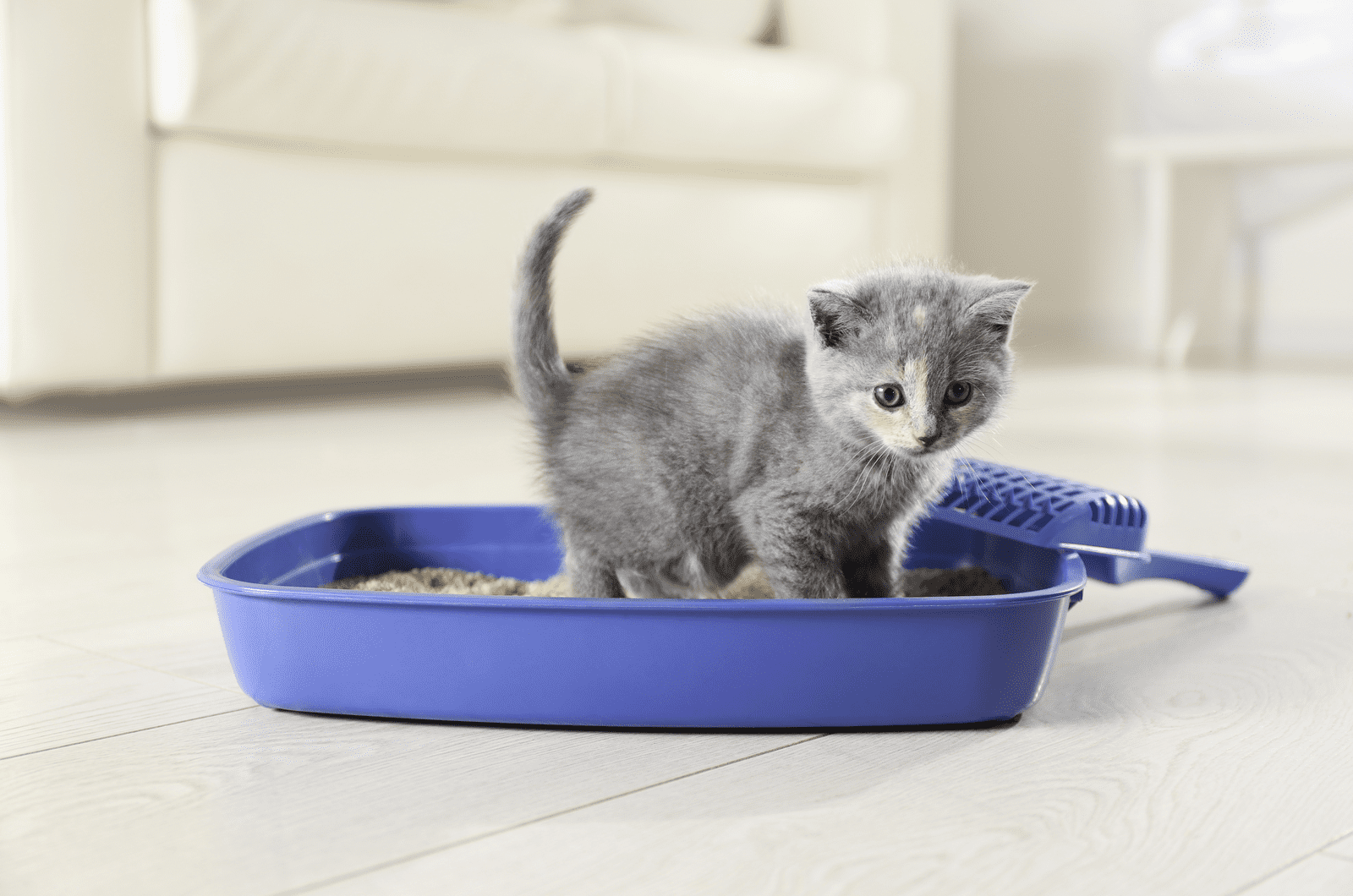
Litter boxes may not be the most fun item on your shopping list, but they are essential for kittens. You’ll need to introduce your kitten to a shallow pan since they’ll have trouble climbing over the higher sides of many litter boxes offered at pet stores.
You’ll also have to find a safe, effective kitten litter to use. Clumping litters should be avoided until your cat is older since they might create blockages if consumed.
Until your kitten gets older, it is recommended to use either a non-clumping type of cat litter or some type of pellets.
You can also check out this Tofu Cat Litter Review, which contains product recommendations and reviews.
To repeat, for the first time you’ll need:
• a litter box
• kitten’s first litter
• litter scoop
• litter pan
Additionally:
• deodorizers
• litter liners
Kittens, unlike puppies, almost toilet-train themselves. That’s fantastic news! Kittens intuitively grasp the notion of the litter box because they prefer exactly this type of material to “do their business”.
When your kitten is around three weeks old, you may begin introducing them to the litter box. This is the point at which kittens no longer require stimulation to go to the potty. Until this stage, they need the mother cat to lick them to encourage them to eliminate waste.
Put the litter box in the corner of your cat’s area and clean it at least once during the day. Then, every time your cat uses their litter box, lavishly praise them in order to reinforce the positive habit.
You’ll be astonished at how easy it is to persuade your kitten to use the litter box!
See also: Buyer’s Guide: Best Multi Cat Litter Box Solutions
New Kitten Checklist: Buying The Extras
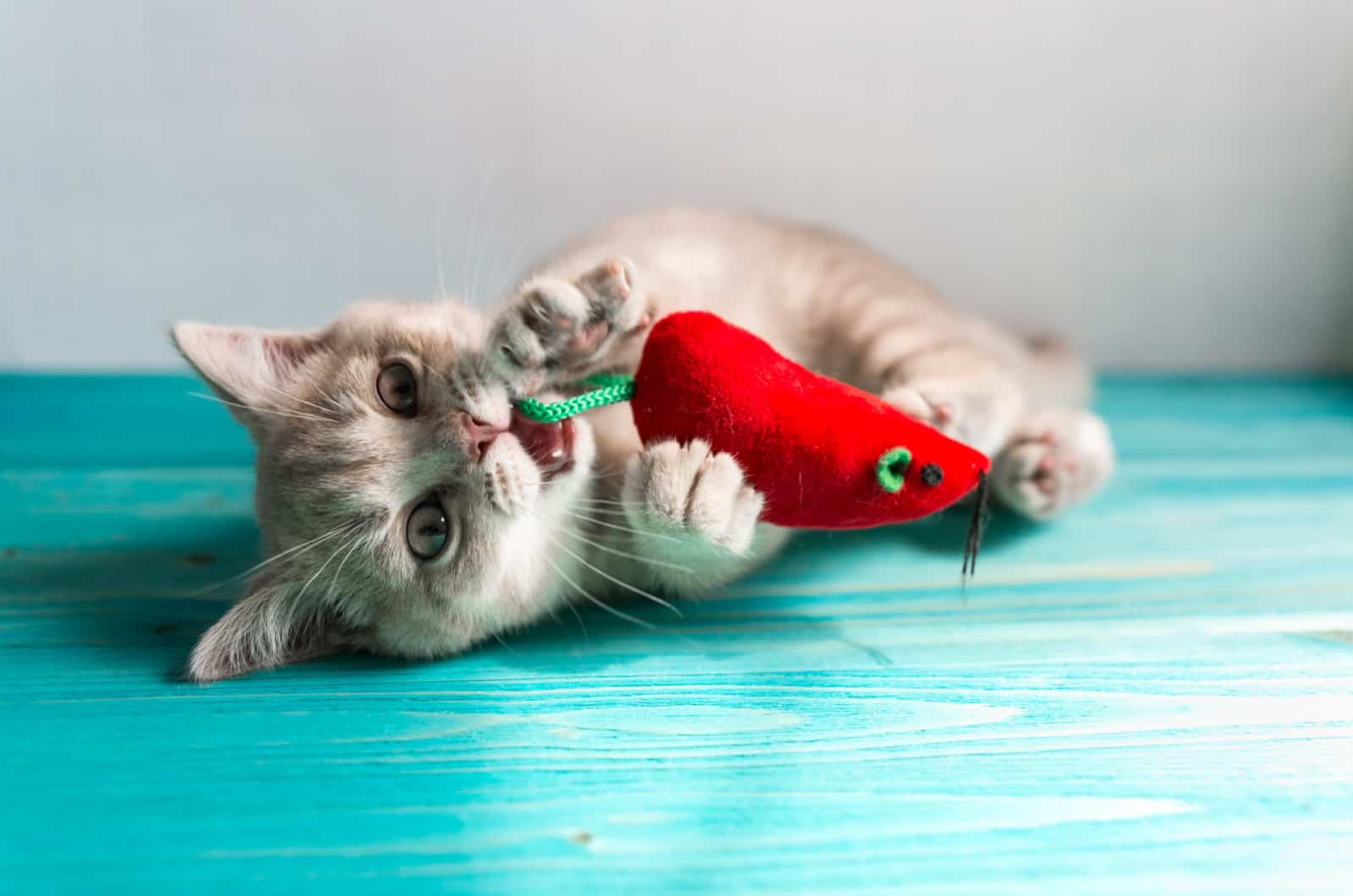
[table id=243 /]
Cat Toys
It is critical to keep your kitten engaged while you are away in order to keep it calm and stop it from experiencing boredom or separation anxiety. To keep cats amused, utilize automated cat toys, interactive toys, and puzzles.
It’s critical to rotate your kitten’s toys to maintain their interest and keep them entertained. Cat subscription boxes have also become highly popular as the pet care business has grown.
Cat Trees & Scratching Posts
Scratching posts and climbing platforms will keep your cat engaged, amused, and fit (and hopefully they will be a better target for those claws than your furniture).
You might feel your cat is simply being naughty when they scratch your new chair, but scratching benefits kittens in several ways; they’re either stretching their entire body, or keeping their claws healthy by removing the outer layer of the nail.
Scent glands in the cat’s paws allow them to communicate with other cats in the house. Provide your kitten with a cat tree, scratching post, or cat scratching pad (or all of the above!), to keep them busy and keep your belongings safe.
You can check out the following three reviews which provide an overview of different products, to help you choose the best cat tree and scratcher for your cat.
• Cat Tree That Looks Like A Tree – TOP 10 Product Reviews
• Best Cat Tree For Large Cats – TOP 13 Product Reviews
• Top 15 Mid Century Modern Cat Tree Choices: Pick The Best One
And, of course, check out this guide for cleaning the cat tree once your cat’s been using it for a while: How To Clean Cat Tree? Disinfect And Clean Your Cat Tree.
Cat Collar
Cat collars with bells are a great way to keep an eye on your kitty while they explore their new surroundings (and provide a warning to any birds they may try to chase).Just make sure that any collar you purchase has a safety breakaway clasp.
Kittens jump and climb when playing, and you don’t want your kitten’s collar to get stuck on something.
Remember to check the collar’s fit on a regular basis. Kittens grow quickly, and you don’t want their collar to get too small and hurt them.
Cat Treats
Treats are an enjoyable way to both reward and bond with your kitty. Just like human treats, if too many are eaten, it can create health problems.
When selecting snacks and treats, bear in mind that your cat should not consume more than 10% of its daily calorie intake from treats. This equates to 20-25 calories of treats each day for a 10-pound cat.
Consider how little your kitten is… Your kitty requires even fewer calories from its daily snacks.
Look for completely cooked, low-calorie snacks that will be healthy and tasty. Sweet foods should be avoided; cats do not need sweet foods, and in fact, they cannot even taste sweet flavors, so this is just empty calories that they cannot even appreciate!.
As your kitten ages, you can consider catnip as a great low-calorie and eco-friendly alternative to other already available cat treats.
See also: Is Blue Buffalo Good For Cats? Unbiased Cat Food Review
ID Tag
If your kitten tries to slip out the door, make sure you have everything ready, so you have the best chance of catching it. You should get a microchip for your new cat as soon as possible.
Having an ID tag on your kitten, on the other hand, makes it quick and easy to recognize them. We recommend that you label your cat as an indoor cat, either separately from the label with your contact information or on the back of it.
Cats are commonly seen wandering around with or without collars, and people are used to that. Attaching the “I’m an indoor cat” tag will get the attention of someone who might otherwise ignore your lost kitten.
Kitten ID tags must include the following information:
• Your cat’s name
• Your name
• Your phone number
• Your address
Brush, Toothbrush, Comb
Having a flea comb and a normal cleaning/grooming brush on hand will motivate you to groom your kitten on a regular basis. This will be good for both of you by providing you time to bond, allowing you to check for pests, and getting your kitten used to further handling.
Long-haired cats and kittens require daily grooming in short bursts. Cats with short hair may get away with only one grooming appointment every week.
Nail Clippers And Nail Trimmers
Keeping your kitten’s nails trimmed can help stop it clawing up the carpet and furnishings. It will also prevent your kitty from scratching you while playing.
While your kitten’s claws will be small until she is older, it is preferable to start nail cutting at a young age. It’s better to learn how to do this at home because taking your cat to the vet for nail trims might be traumatic.
If you want to trim your cat’s nails on a frequent basis, we recommend buying a good set of quality nail clippers that can cut through stronger adult cat nails more easily. Another possible option are cat and kitten nail caps. Check out the following article and learn more about them:
• Cat Nail Caps – Everything You Need To Know
Bringing A Kitten Home: TO DO List
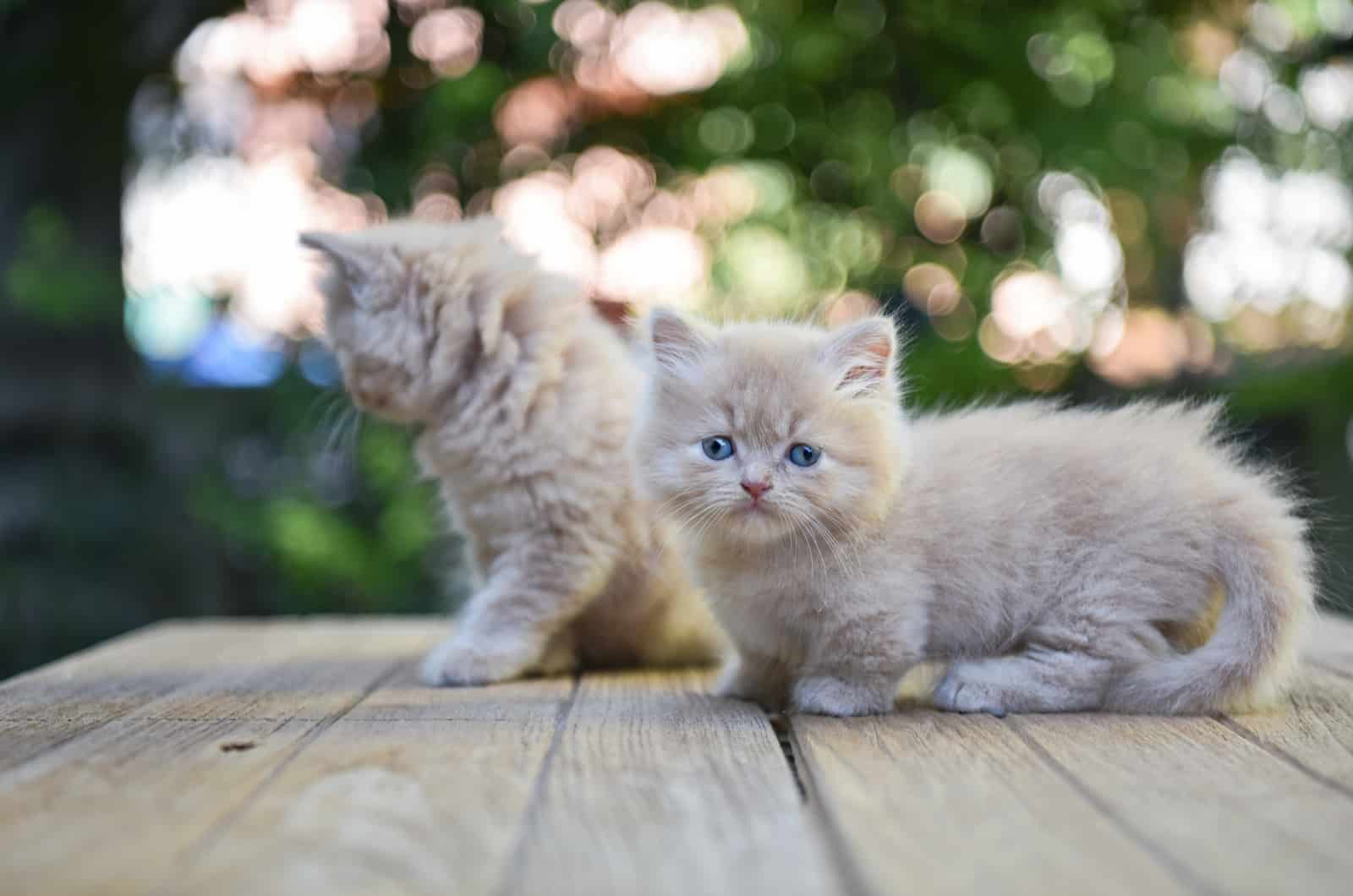
Kitten care is about more than simply buying the best goods and accessories; it’s also about establishing a happy environment for your pet.
While kittens are typically thought to be “low-maintenance” compared to puppies, there’s more to contemplate than you might imagine.
Consider Adopting Two Kitties
Many kitten adoption organizations and shelters will provide two kittens for the price of one adoption fee. This is partly due to overpopulation as well as the desire to place more felines in loving homes.
However, having a friend for your kitten from the start has behavioral and emotional benefits.
When kittens live in pairs, they benefit in lots of ways:
• Playtime buddies – they play with each other
• Learning through observation
• Companionship enriches and entertains
• Pairs can be introduced to pre-existing pets more easily
• Helps reduce separation anxiety
If you’re thinking about getting only one kitten and don’t already have any cats, consider getting two if you’ve got the time and money.
Getting two kittens instead of one helps a feline from developing a so-called single kitten syndrome.
Note: Please keep in mind that you should always evaluate your financial situation as well as your capacity to give adequate veterinary care for any new pet you bring home.
Kitten-Proof The House
Kittens are lively, inquisitive… and occasionally destructive. By kitten-proofing just one area in your house, you may prevent negative behaviors and damage.
As your kitten grows bigger and starts to wander more around the home unaccompanied, you should broaden your kitten-proofing to include the entire house.
Here’s how it’s done:
• Place breakables in a safe place.
• Remove essential things off shelves and counters.
• Examine your surroundings and remove any hanging things.
• Take out any harmful plants.
• Install childproof cabinet and drawer locks.
• Install childproof lids on electrical cord outlets
• Have the toilet lid closed at all times.
• Place all medications in a secure cabinet.
Kitten Socialization Practice
As a kitten parent, one of your responsibilities is to help your pet get comfortable in their new family and get them used to unfamiliar surroundings. This can make vet visits and locating them if they go missing much easier.
The key window of opportunity for kittens to be open to new experiences ranges from two to fourteen weeks. Because most owners do not take the kitten home until they are two months old, you are dealing with some time constraints.
Make sure you’ve got the time to help your feline friend get familiar with the following situations:
• Getting to know other pets and animals
• Visiting the veterinarian
• Taking a car ride
• Being around various household appliances (vacuum, dishwasher, etc.)
• Being contained in a container or carrier
• Meeting people who are not part of your family
• Brushing or grooming
• Having a bath
• Having their nails clipped.
• Having their ears cleaned
Don’t give up on training your kitten if you don’t get everything done before they reach the age of fourteen weeks. Time and repetition will help your cat become accustomed to new experiences, regardless of age.
Introducing Kittens & Cats
Kittens and cats initially want to meet only by smell. You may let them smell each other from beneath the door to your kittens’ “safe room.” After letting them meet for a few days by smell, you can introduce the two more.
Then, unless there are signs of violence, you can allow the kitten out for a few hours each day while the cat sniffs around its safe room. You can then let them have a face-to-face meeting.
You should do this by placing the kitten safely in a carrier or box and allow the other cat to say hello. This should be done several times a day for short periods of time until both cats are comfortable and show no signs of aggression.
Finally, leave the kittens’ room door open so that the cat and kitten are able to meet face-to-face at their own pace. Always monitor them in their early encounters and watch for any unwanted signs of aggression.
Over the next few months, and possibly years, your cats may hiss and bump.
This is perfectly normal, as cats are constantly checking their territorial hierarchy. Your job is to keep their arguments from devolving into full-blown, potentially damaging fights!
Introducing Kittens & Dogs
You can introduce your kitten to your dog(s) in pretty much the same way you would with cats. Before leaving the kitten alone, you should start by honing your dog’s obedience skills.
Focusing on commands like “come” and “stay” can help when you’re overly excited about the new roommate you just brought home.
When the kittens come home, keep them separately in a kitten-safe room. Focus on spreading the kitten’s and your dog’s scent in each other’s areas. The easiest way to do this is to mix the litter.
Smelling each other in their own territory before meeting them helps each animal get used to and accept them.
Then you can let the two meet, using the baby gate, for example, as a barrier. You can walk your dog by the barrier several times during the day and treat each pet for good behavior.
Finally, when you feel that they are truly ready to meet, let them do it in a neutral area of your home. Make sure your dog is on a leash so the kitten can easily move away if it gets scared.
All meetings should be fully monitored until both parties seem completely at ease with each other. This can take some time, but that’s okay. Be patient, and don’t give up. Some roommates are never best friends, but over time they learn to live together.
See also: Warning Signs When Introducing Cats And How To Do It Properly!
First Year Veterinary Care
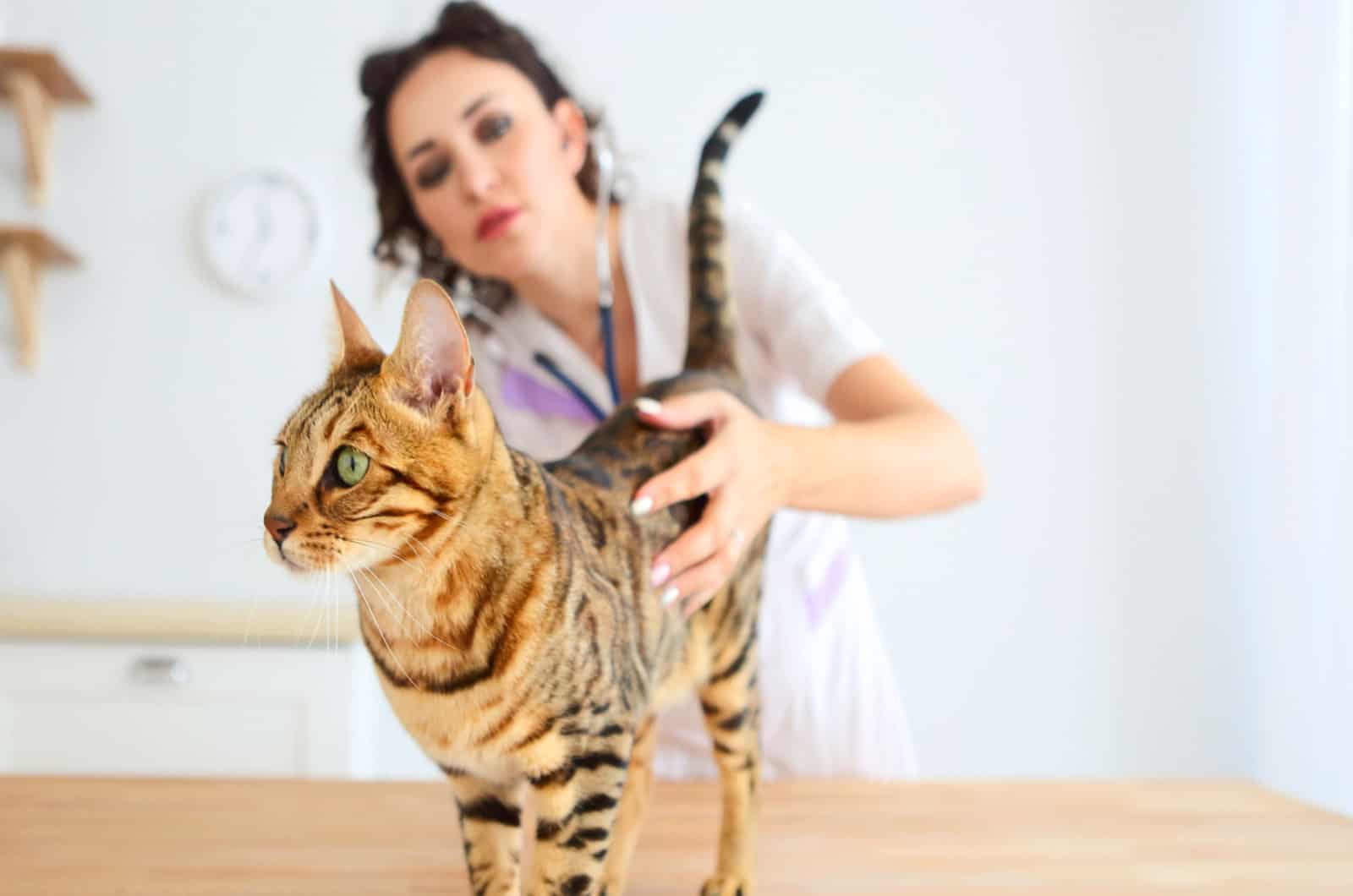
Begin your kitten’s life on the right foot by ensuring that all medical milestones are met with early veterinarian treatment. You should also consider purchasing pet insurance so you don’t have to worry about any urgent and unexpected vet visits in the future.
You’ll want to address any health issues you’ve discovered in your cat; your cat’s wellness and health are the most important things!
Vaccinations, flea and heartworm prevention, and getting your kitten neutered/spayed are all part of the first year of veterinary check-ups.
Flea Prevention
Currently, nitenpyram and lufenuron are the only two chemicals classified as “safe” for kittens under the age of eight weeks to eliminate fleas.
If your kitten is too young for the various flea treatments, your alternative choice is to give it a flea wash with a gentle shampoo, use a flea comb, and treat the areas of the home that he may have been in.
Discuss any questions you have with your veterinarian. Your veterinarian will be able to inform you of the optimal preventative strategy for your kitten’s age and size.
Neuter/Spay
From four months old, you can have your kitten neutered or spayed. Female kittens typically attain sexual maturity at four months, whereas male kittens become sexually mature at five months or later.
To avoid any mishaps, you should spay/neuter your kitten as soon as possible.
Some owners are apprehensive about having their pet spayed/neutered, yet it has several advantages for both you and your cat:
• Increases life expectancy
• Improves behavior, reducing territorial behaviors
• Removes the possibility of uterine infection
• Reduces the likelihood of cancer in the reproductive organs
• Reduces your pet’s urge to roam
You should consult with your veterinarian about any concerns or questions you have, as well as the best time to have your cat neutered.
Check out: When Is It Too Late To Neuter A Cat? Read On To Find Out!
Vaccinations
Cat immunizations are necessary even for indoor cats because you don’t know when your cat might escape or meet another feline.
Many of the diseases that cats can possibly contract can result in shorter lifespans, which is something that all cat parents want to avoid.
In addition to the required rabies vaccination, your kitten will be protected against calicivirus, feline herpes, feline leukemia, feline distemper, and chlamydia.
Heartworm Prevention
While heartworms may not always live to adulthood, they can still be harmful to your cat’s health. HARD is a condition caused by heartworms (heartworm-associated respiratory disease).
Prevention is the only method to keep your kitten from getting heartworms at any stage in their lives. While dogs may be cured of heartworms, cats do not have an analogous therapy.
You should begin administering heartworm prevention to your kitten no later than two months of age or as soon as the prescription allows.
FAQ

Where should my kitten sleep on the first night?
A healthy, relaxed, well-adjusted kitten should not require nighttime crating. The ideal spot for a kitten to sleep is a safe area that is shielded from air flow and which feels cozy and warm.
It is best to keep the kitten near you for the first couple of nights. Find a comfortable spot near your bed so they can be reassured by your presence.
How long does it take for a kitten to get used to a new home?
Every kitten is unique. For some kittens, this settling-in stage may last only a few hours, whilst for others, it may last days or even weeks.
For really cautious and hesitant cats, the procedure might take up to 6 weeks. Just be patient and know that this is typical.
What should I do if my kitten has diarrhea?
Treatment options for kitten’s diarrhea can include altering your kitten’s food. It is not necessary to restrict food in diarrheal cats. Increasing the cat’s fiber intake may help.
Alternatively, a low-fiber (very digestible) diet can help some forms of cat diarrhea. Encourage the consumption of water and electrolytes. Probiotics and anti-diarrheal meds should also be included, but only on the advice of your vet.
How much time should I spend with my kitten?
Spend at least an hour every day with your kitten. Playing with your pet for at least 20 minutes every day not only gives them physical and mental stimulation, but it may also improve your relationship. Studies show it may be good for your health too!
Set aside at least three solid play sessions (of about 20 minutes) every day. Kittens thrive in the early morning and late evening.
What should I feed my kitten?
It is preferable to begin with wet kitten food and gradually introduce kibble as your kitten develops. Include moist items in the diet on a regular basis, such as wet canned food.
Finally…
Bringing a kitten into its new home is so exciting, but at the same time, it can be challenging. It is normal to feel worried if you’re not sure how your kitten will adjust when you bring it home.
All these concerns are pretty normal, and the most important thing is to be patient.
New pet parents tend to worry a lot at the beginning if their kitten won’t come out or is sleeping and hiding away a lot, but this is all very normal. Kittens need a lot of time to rest, especially when very young.
If their health is ok and you’re doing your best, your kitten will become playful and come out of hiding in no time! Welcome your new family member whenever he/she decides to come out of its soft cat bed into your lap.
Remember to be patient and don’t give up on your new little feline friend!

